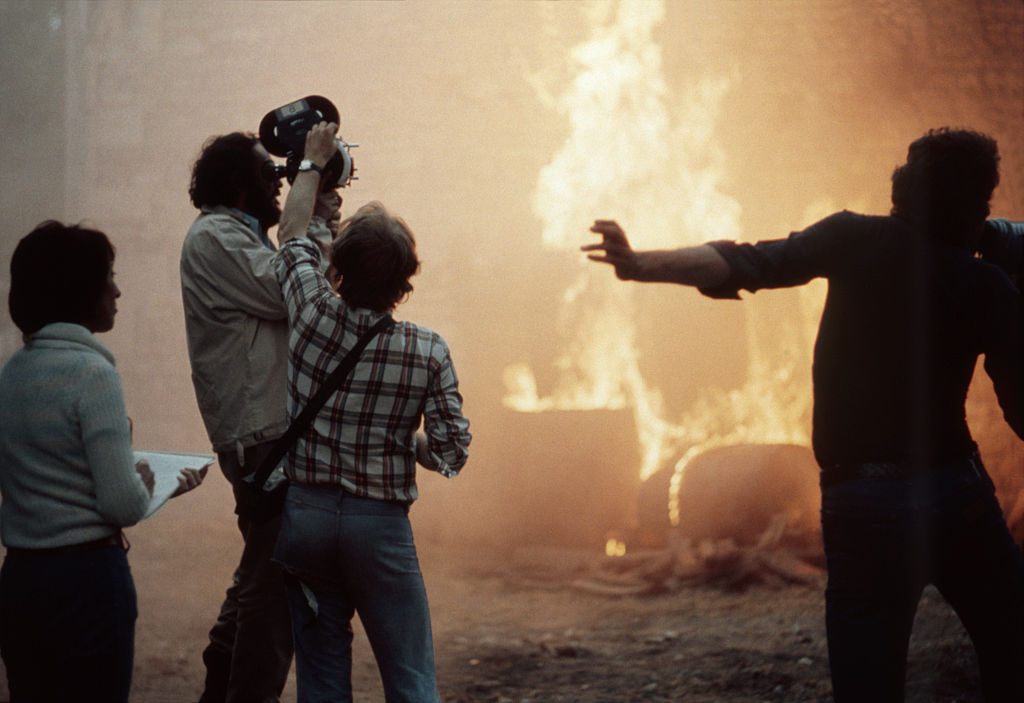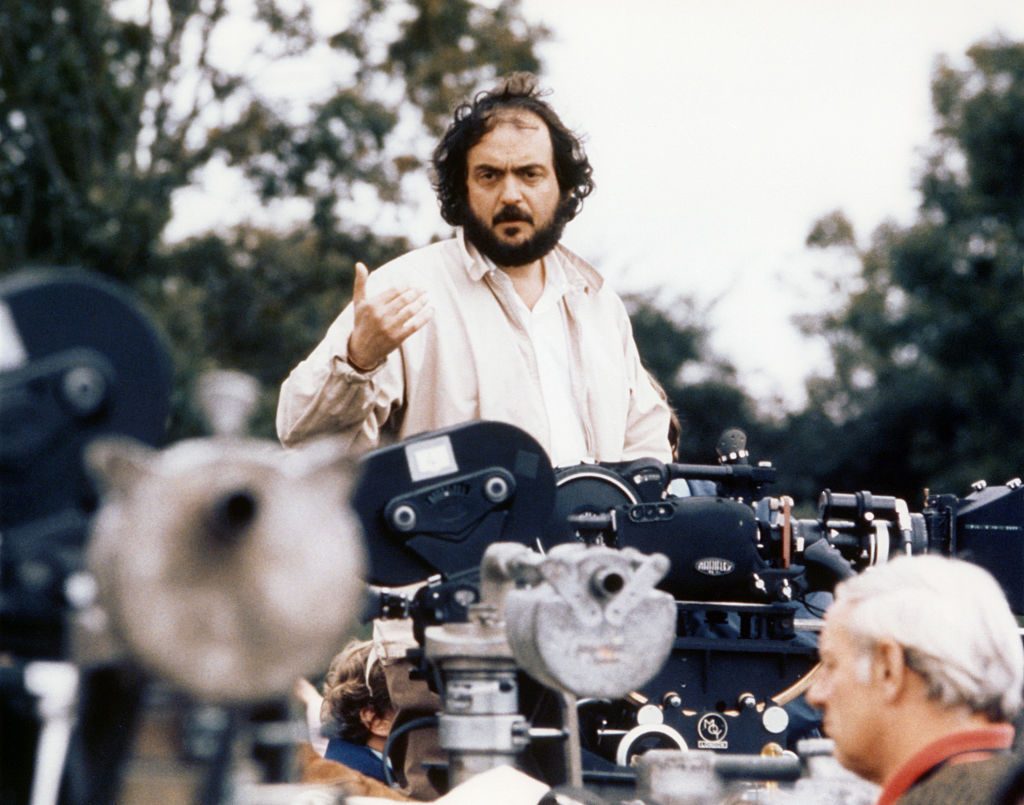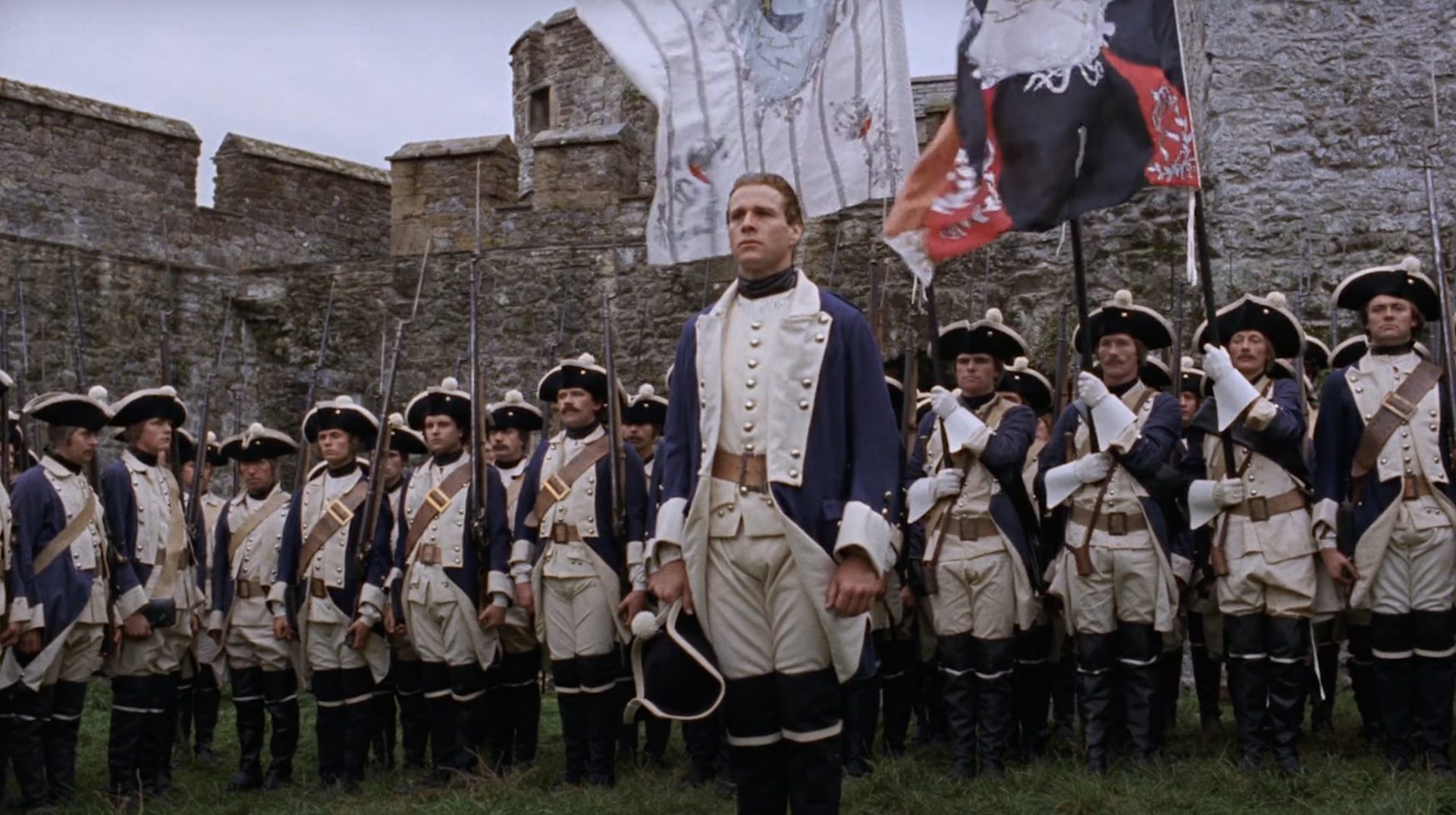For Stanley Kubrick, the self-made, cynical observer of human foibles, exiled in his rambling Georgian manor, the story of Barry Lyndon, Thackeray’s amoral 18th century Irish antihero, was an obvious choice. Yet, for critics in 1975, the purpose of Kubrick’s mannerly, exquisitely assembled period piece was less certain. The acclaim in which Barry Lyndon, is now held is so extravagant that it is hard to remember that until the early 2000s, if the film was discussed at all, it was as an eccentric flop.
The cold, forbidding masterpiece, wilfully formalised and alienating, left audiences, particularly in America, baffled. Even otherwise perceptive critics struggled to make sense of Kubrick’s years-long project, whose obsession with form seemed vaguely immoral as well as alienating. For Baudrillard, the film’s “very perfection is disquieting”; for Frederic Jameson, Barry Lyndon’s “very perfection as a pastiche intensifies our nagging doubts as to the gratuitous nature of the whole enterprise.” For the reclusive director himself, later tallying his string of critically fêted blockbusters, “The only one that did poorly from the studio’s point of view was Barry Lyndon.”
Yet half a century on, it is itself a historical artefact; Barry Lyndon has become perhaps the cornerstone of Kubrick’s reputation: an 18th-century folly in which the world of its setting is realised as fully and as strangely as descent onto an alien planet. Like few other films, Barry Lyndon is not so much watched as analysed, frame by painterly frame. It is well known that, to achieve the look of the 18th century, bathed in candlelight and grey shafts of natural light, Kubrick resorted to the technology of the contemporary space race. Yet the ultra-fast and ultra-rare Zeiss f/0.7 lens, built in tiny quantities for space photography, had such a shallow depth of field that, when used, the actors could not move for fear of drifting out of focus. Already painterly in its composition — its cinematographer, John Alcott, is pointedly listed as “photographer” in the credits — the result was a further level of distancing, knitting a film from a series of cool and mannerly tableaux vivantes, broken up by bursts of vivid, handheld violence.
Like few other Hollywood films, every shot is carefully considered for its precise effect — much like that contemporary auteur Adam Curtis, Kubrick repeatedly stated that his real craftsmanship lay in the work of editing. As with the film’s aesthetic, discomfortingly sumptuous and clinically detached, so it is with what little narrative it contains. The plot, already thin in the Thackeray, is thinner still in the adaptation. Indeed, it is only by comparing the differences between Thackeray’s notional source material and Kubrick’s own unique capriccio that we may fully appreciate the filmmaker’s originality, and the creative faithlessness of his adaptation.
Like many an Englishman married to an Irish wife, William Makepeace Thackeray had ample opportunity to reflect on the vagaries of the Irish temperament, as changeable as Kubrick would later find its weather. “A characteristic of the Irish writers and people, which has not been at all appreciated by the English, is, I think, that of extreme melancholy. All Irish stories are sad, all humorous Irish songs are sad: there is never a burst of laughter excited by them but, as I fancy, tears are near at hand.” Thackeray had, perhaps, over-generalised from his own domestic situation: his Anglo-Irish wife, Isabella Shawe, was of a changeable temperament at the best of times. Suffering from post-natal depression, she attempted to throw herself into the sea when the couple were travelling “home” to Ireland, on a jaunt that would become the writer’s celebrated Irish Sketch Book. Thackeray would have to travel the country alone, committing Isabella to an asylum for the duration of his writing trip.

The resulting work, a classic of Irish reportage, written just a few years before the Famine that would upend both traditional society and, eventually, the political connection with Britain, is suffused, for all Thackeray’s witty observations, with an air of melancholy. Famished families begging at the road, damp hovel cabins, the mouldering and neglected estates of feckless landlords populate his pages, jarringly interspersed with humorous portraits of fellow tourists. Like other Englishmen of a romantic disposition, he found the country both captivating and infuriating. Though more sympathetic to the Irish themselves than most of his time and class, his mixed feelings on the unhappily misgoverned country would soon gestate into own ambivalent recreation of the 18th century, The Luck of Barry Lyndon. As for Thackeray’s own tortured connection with Ireland, we see it in the melancholy, occasionally suicidal Lady Lyndon, effectively imprisoned by her husband, who would ultimately appear in Kubrick’s film.
“Like other Englishmen of a romantic disposition, he found the country both captivating and infuriating.”
Thackeray’s novel is an Irish one in the way that Kubrick’s film, despite the grandeur of its location scenery, filmed with the nostalgic Kodachrome brilliance of the postcards once displayed in many an emigrant home, is not. Indeed, in its portrait of an outsider making his way, through self-made success, into an established high society which never fully accepts him, it has been described as Kubrick’s most Jewish film. Thackeray’s titular hero, is, on the one hand, an archetypal portrait of the hard-drinking, duelling, gambling and financially disastrous Anglo-Irish “squireen” petty landlords of the 18th century. And yet, as Thackeray’s satirical English eye observes, the downwardly mobile Redmond Barry of the novel’s beginning is boastfully proud of his shakily proven noble Gaelic descent, and nurses a grudge against the Cromwellian invader, “that Roundhead Lyndon”, who usurped his ancient lands, and whose Anglo-Irish descendants still occupied them.
In the film, the widowed Lady Lyndon, whose fortune and surname Barry would forcefully acquire, represent the outsider hero’s conquest of English high society. Yet in the novel, the Lyndons themselves — their title, castle, vast estates and fashionable townhouse — are Irish. All the wealth driving the novel’s plot, the fortune gained and lost, has been extracted from the wretched tenantry. The novel is suffused, as the film is not, with the rural outrages of a mobilising peasantry: Thackeray was drawing, without realising it, a society stumbling its way towards revolution.

None of this Irish context, keenly felt by Thackeray, survives Kubrick’s adaptation. Yet even when pushed to the background, Ireland’s history has a way of reinserting itself to the foreground: Kubrick’s year-long location shoot in Ireland was brought to an abrupt end by an anonymous threat, purportedly by the IRA. The director would never film outside southeast England again. And of all this freighted material, Kubrick makes something darker still. Where Thackeray’s novel is a picaresque entertainment, Kubrick’s film is a cynical exploration of human society, viewed with a detached anthropological eye. Where Thackeray has chance determine the fortunes of his characters, Kubrick introduces the remorselessness of fate. Like its long reverse zooms, which reframe the central characters as insignificant additions to overpoweringly grand landscapes or palatial grounds, Barry Lyndon shows the individual attempting to break the confines of a society whose precepts he ultimately does not question. His Hogarthian rise and fall seem preordained in a way they do not in the novel: the film’s opening and closing duels, which seal his fate, are both Kubrick inventions. Where Barry is himself the unreliable narrator of Thackeray’s novel, Kubrick adopts the omniscient tone of a mid-19th century novelist, freely adapting the original prose for the voiceover narration into his own pastiche of Thackeray’s style. Most of this wry and worldly commentary on man’s foibles, overlaying the film like a God tiring of his own creation, is purely Kubrick’s own.
Indeed, the voiceover undercuts the drama of each scene, by warning you of the deaths, failures and squandered opportunities to come before they happen, hammering home the inescapability of fate. As Kubrick observed, “I think the commentary creates the same dramatic effect as, for example, the knowledge that the Titanic is doomed while you watch the carefree scenes of preparation and departure. These early scenes would be inexplicably dull if you didn’t know about the ship’s appointment with the iceberg.” The performances are as disconcertingly stiff and lifeless as Kabuki theatre: watching Ryan O’Neal, we wonder if, as in Herzog’s 18th century effort the following year, the director had hypnotised his cast before filming. Only at times of violence and high emotion — fights, Lady Lyndon’s attempted suicide, battle — does the former documentary photographer Kubrick bring out his handheld camera to record the action. These sudden bursts of drama and emotion are more often seen in the novel than the film. As with Barry Lyndon’s climactic duel, a masterpiece scene of unbearable, mounting tension, all the film’s barely repressed emotion, 18th-century formalism, and twists and turns of fate are Kubrick’s invention. The film, somehow, has become more archaic in its tone and message than its early 19th-century inspiration.
Like the great generals and statesmen of the Seven Years’ War who he satirised in his script, he dispassionately manoeuvred his subjects like chess pieces, driving his set designer to a mental breakdown. Kubrick’s staff likened him to his claimed hero Rommel, as he acquired his own fleet of Volkswagen trucks, and dispersed them across the Irish countryside in search of locations like the reconnaissance prongs of an invading army. To attain the right shade of melancholy pallor, Kubrick’s Lady Lyndon, the actress Marisa Berenson, was sequestered alone, taskless, in an out-of-season rural Irish hotel for some months: another echo, conscious or not, of Thackeray’s own creative process.
Perhaps we can say that rather than a scene-setting background, Barry Lyndon’s overt purpose is its obsessive recreation of an 18th-century world, far more than the brute exigencies of plotting and performance. Freely changing the plot and dialogue of the novel for his own purposes, Kubrick was nevertheless almost autistically dedicated to faithfully recreating the period. He bought up original clothes, and finding them too small for his 20th century actors, had them disassembled and remade in contemporary sizing, reverse-engineering the 18th century at scale in a converted airfield factory. Hiring the traditional Irish music group The Chieftains for the soundtrack, he then insisted they play on original period instruments.

All of this relentless, obsessive recreation of the period can be read as a love-letter to surely the greatest film never to be made, Kubrick’s Napoleon. Years in pre-production, much of the research for which was later to be transferred to Barry Lyndon, Kubrick’s Napoleon was to be his crowning achievement, made on a scale that eventually frightened its backers out of funding it. Tens of thousands of Romanian troops, in colourful Napoleonic uniforms, would march across the screen. As Kubrick declared, “from a purely schematic point of view, Napoleonic battles are so beautiful, like vast lethal ballets, that it’s worth making every effort to explain the configuration of forces to the audience”, through animated maps as well as cinematography, because “there’s an aesthetic involved; it’s almost like a great piece of music, or the purity of a mathematical formula. It’s this quality I want to bring across, as well as the sordid reality of battle.” To a certain subset of male mind, the non-existence of this film is as great a cultural loss as the Library of Alexandria.
Where Thackeray’s Barry Lyndon was a warm-up for his great Napoleonic canvas, Vanity Fair (which Kubrick reluctantly declared unfilmable), Kubrick’s was his “rebound film”, a consolation prize that is itself a masterpiece. Its scenes of massed redcoats marching to “Lillibullero” and “The British Grenadiers” to fife and drum, and of the formalised violence of 18th-century battle — here “only a skirmish”, archly notes Kubrick’s voiceover script — are tantalising glimpses of what could have been. Instead, like Vanity Fair’s Becky Sharp, Redmond Barry is himself a Napoleonic figure, a grandiose and amorally ambitious upstart who soon conquers the courts of Europe. Thackeray had himself seen Napoleon, in his St Helena exile, while travelling “home” to England and school from his Indian birthplace, some five years after his novel concludes. Kubrick concludes the film at a pointedly different date: a cheque written in the final scene by Lady Lyndon to her estranged husband reveals the year 1789, modernity’s birthdate, as the endpoint for his reconstructed world.
Living at another such great historical hinge point, perhaps Kubrick’s recreation of this strange, brilliant and doomed world feels all the more striking. A prequel for the masterwork Kubrick never made, a cynical romance and lushly-filmed ode to alienation, it has taken half a century for the world to grow into Barry Lyndon.

















